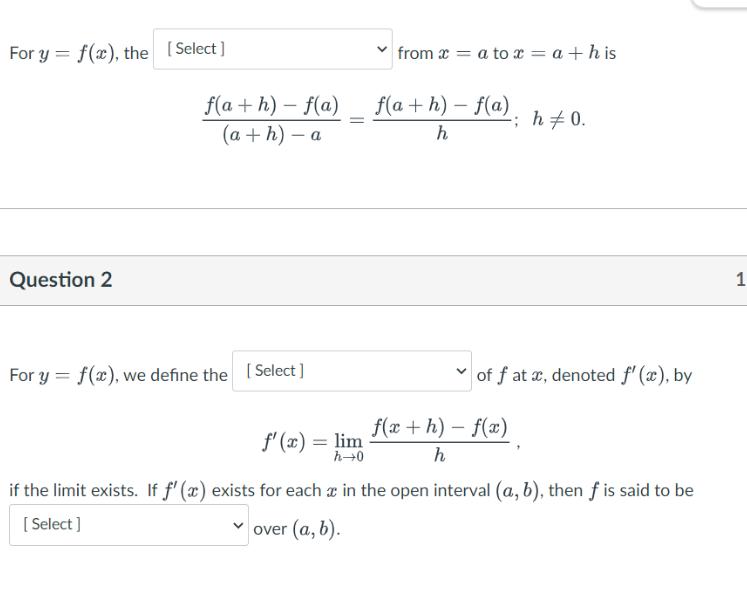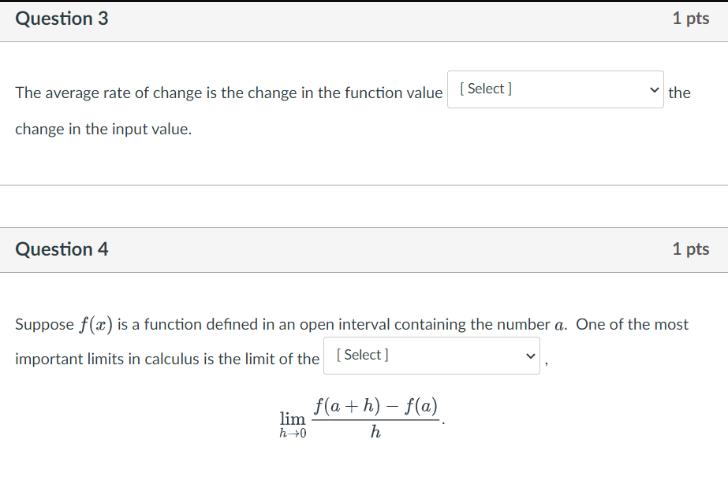Answered step by step
Verified Expert Solution
Question
1 Approved Answer
For y f(x), the [Select] = f(a + h) - f(a) (a+h)-a Question 2 = from xa to x = a+his f(a + h)




For y f(x), the [Select] = f(a + h) - f(a) (a+h)-a Question 2 = from xa to x = a+his f(a + h) - f(a); h+0. h = For y f(x), we define the [Select] of f at x, denoted f'(x), by f'(x) = lim f(x + h) f(x) h0 h if the limit exists. If f'(x) exists for each in the open interval (a, b), then f is said to be [Select] over (a, b). 1 Question 3 The average rate of change is the change in the function value [Select] change in the input value. Question 4 1 pts the 1 pts Suppose f(x) is a function defined in an open interval containing the number a. One of the most important limits in calculus is the limit of the [Select] lim h0 f(a + h) - f(a) h Question 5 Given y = f(x), the [Select] point of (a, f(a)) is given by f(a + h) f(a) - lim h0 h of the graph at the provided the limit exists. In this case, the [Select] to the graph is the line through (a, f(a)) with slope given by the limit. 1 pts line Q1) options: instantaneous rate of change/ slope of the tangent line/ derivative/ average rate of change Q2) options: limit/ asymptote/tangent line/ derivative/secant line Q3) options: added to/subtracted from/ times/ divided by Q4) Difference quotient/ derivative/limit/ rational function Q5) options for the first drop-down: tangent/ slope/secant/ asymptote/intercept options for the second drop-down: secant/ intercept/ regression/tangent/ asymptote
Step by Step Solution
There are 3 Steps involved in it
Step: 1

Get Instant Access to Expert-Tailored Solutions
See step-by-step solutions with expert insights and AI powered tools for academic success
Step: 2

Step: 3

Ace Your Homework with AI
Get the answers you need in no time with our AI-driven, step-by-step assistance
Get Started


